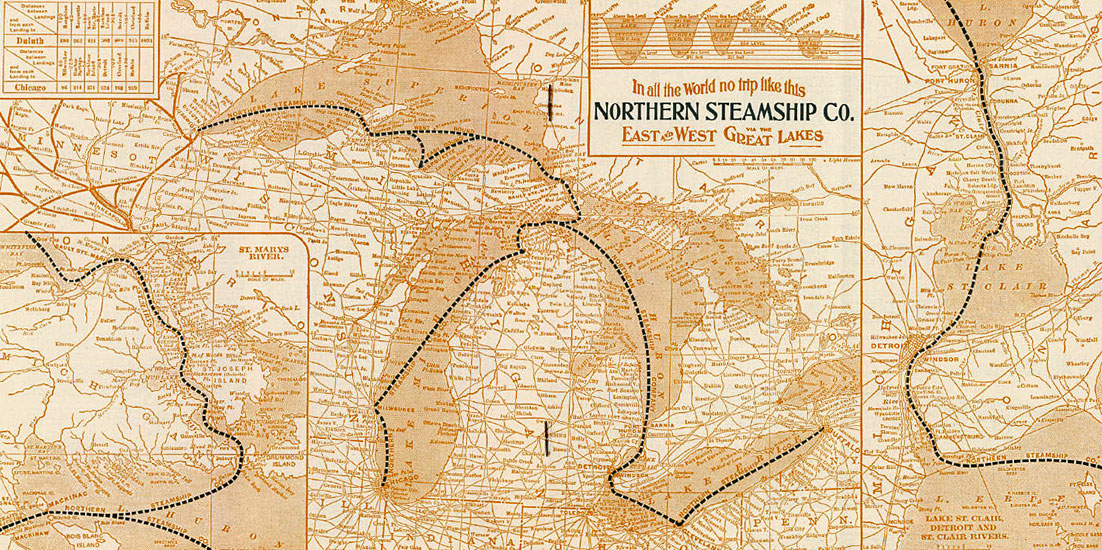Luxury Liners on the Lakes: The North Land and North West

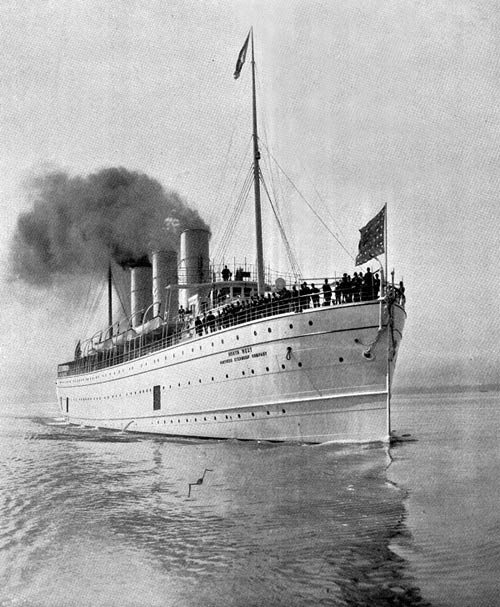
The "North West." Image source: private collection.
James. J. Hill, railroad magnate of the Great Northern Railroad, developed the Northern Steamship Company
to connect his freight shipments between Buffalo and Duluth. After constructing six lake freighters, he decided to
capture passenger traffic on the Great Lakes and in 1892 began construction on the first of two luxury liners
at the Globe Iron Works in Cleveland. His intention was to build the largest and most modern ships on
the Great Lakes, equal in every way to the 'ocean greyhounds' in speed and luxury.
The first, named the "North West," was launched in 1894 and, after test runs, came to Buffalo to be finished and furnished. According to J.A. Colby & Sons, of Chicago, their company designed the furniture and upholstery for both liners, using mahogany and primavera (white mahongany) in Louis XV Rococo style. The company described its decor thus: "When we think of the traditional shiny, white cabins we have known so well, this symphony of brown, bronze-green, and gold with the delicate carving and relief work, repeated through such an imposing length of space, all softened by the light of amber-tinted glass, is a marvel... Staircases of white mahogany, with tesselated floors and upholstering of terra-cotta leather; huge plate mirros; balconies furnished in antique brass; reading rooms no less luxurious; ladies' parlors; men's cafe; smoking rooms; little conservatories; bronze and marble statues; a dining-room like a prince's banquet hall; and staterooms of every conceivable shape and size here..."
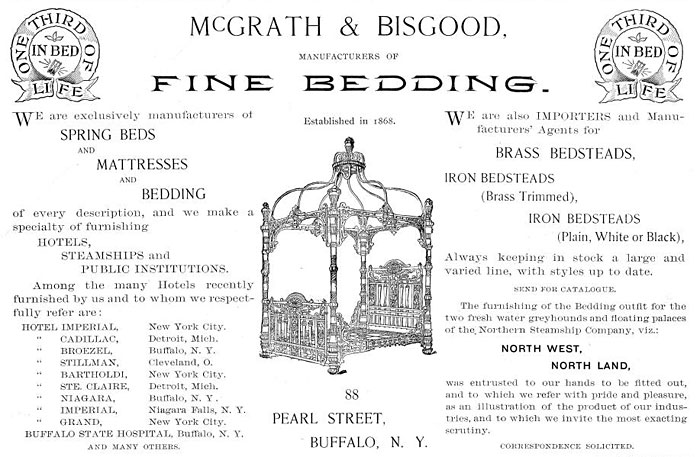
Advertisement for Buffalo company that furnished the North West and North Land. Image source: private collection.
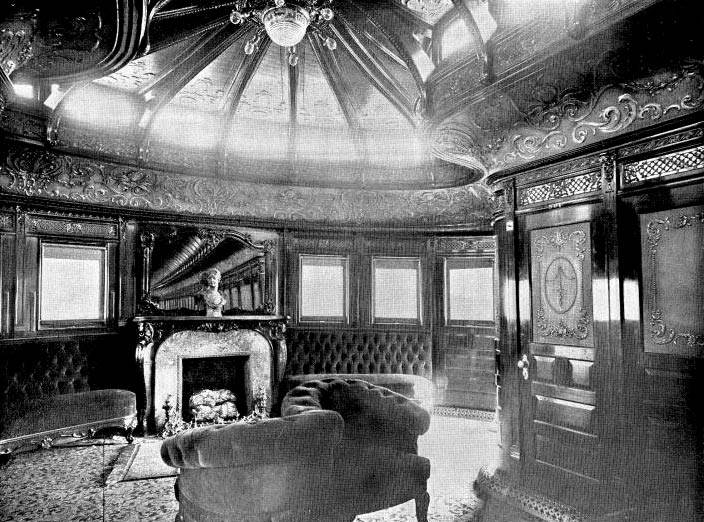
The after part of the main cabin of the "North West." Image source: private colllection.
The ship could carry between 800 and 1,000 passeners per trip, including a crew of 147, most of them dedicated to serving the passengers. The company declared that, unlike the great Atlantic ocean liners, the "North West" had an unlimited supply of fresh water and was able to supply hot and cold water under pressure, with flush toilets in the water closets from pressure tanks. With three hundred separate water fixtures aboard and constant water pressure, the company was able to advertise the ship as especially safe from damage by fire.

Advertisement for the Fisher Electrical Company. Image source: private collection
The "North West" weighed 2,339 tons, was 385 feet long, 44 feet at the beam, and 34 feet from keel to promenade deck. Its hull was painted white, the three smokestacks painted yellow with a black band near the top, the center stack having a white star and the letter "N" to signify the company. Its two quadruple expansion engines generated 7,000 HP. It had a regular speed of 20 MPH with a 16 foot draft. Its two propellers were 13 feet in diameter. The ship consumed eight tons of coal per hour.
When the "North West" steamed full speed up the Detroit and St. Clair rivers, its huge size created destructive wakes and shore damage; the ship was subsequently obliged to reduce its speed in these areas.
By 1895, the "North Land" had launched, identical to the "North West" except for refinements possible with the newer ship. Both ships maintained service of every three days between Buffalo and Duluth. The regular stops were Buffalo, Cleveland, Detroit, Mackinac Island, Sault St. Marie, and Duluth.
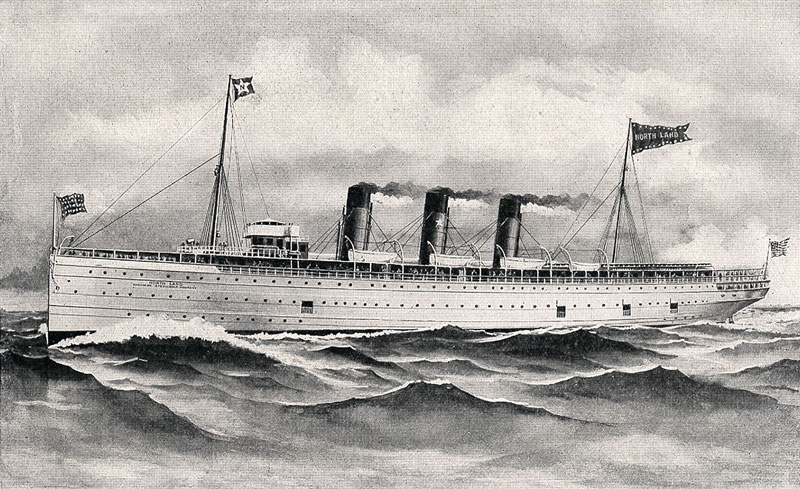 <
<Design as originally constructed. Image source: private collection.
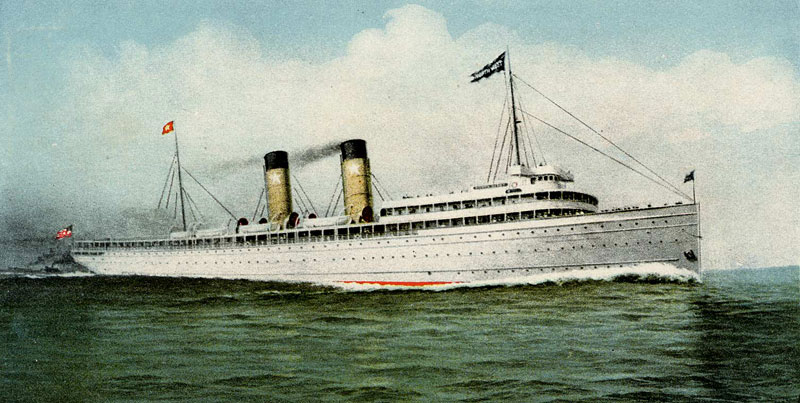
1902 after boiler replacement and remodeling. Image source: private collection
After the 1901 shipping season, each ship underwent $250,000 reconstruction. The original boilers were so dangerous to coalers working around them that it was nearly impossible to hire hands to operate them. The 24 French Belleville tube boilers were replaced by 10 Scotch boilers. This eliminated the need for the third smoke stack and boiler casings space, making space available for new cabins, wheelhouse and bridge, deluxe parlors and a doubling of the capacity of the dining room to 250 persons. As the before-and-after images illustrate, the appearance of the ships was also greatly enhanced by these changes.
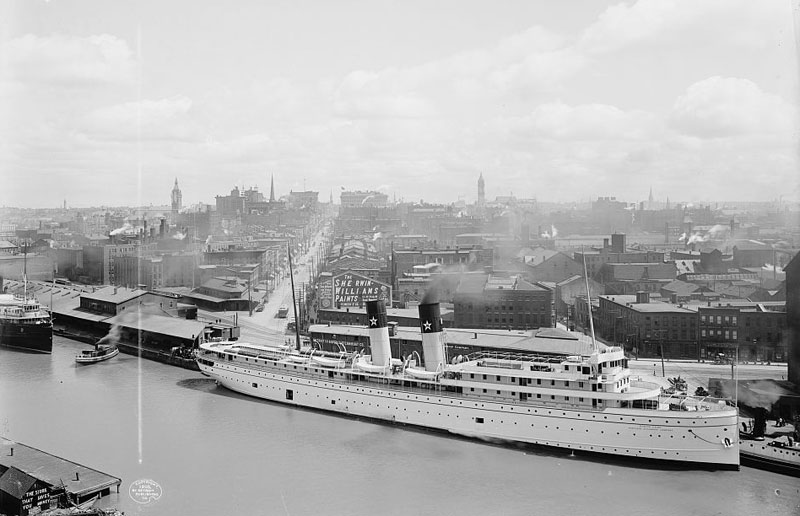
One of the liners berthed at the Long Wharf at the foot of Main Street. Image source: Library of Congress
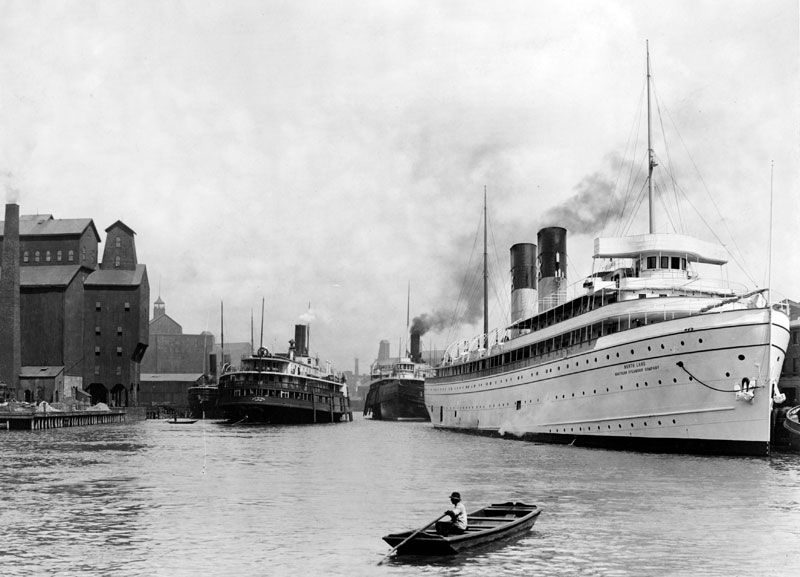
Another from water level in Buffalo's harbor. Image source: Library of Congress
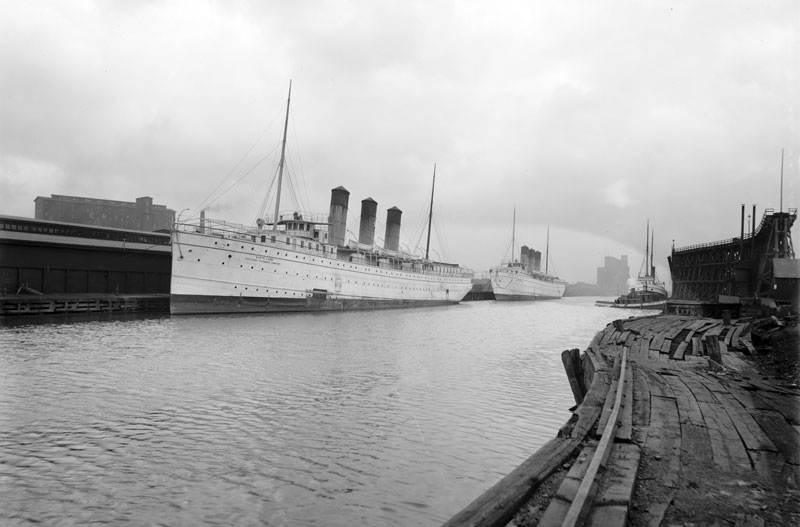
Winter berths for the ships in the Blackwell Canal near Tifft Street.
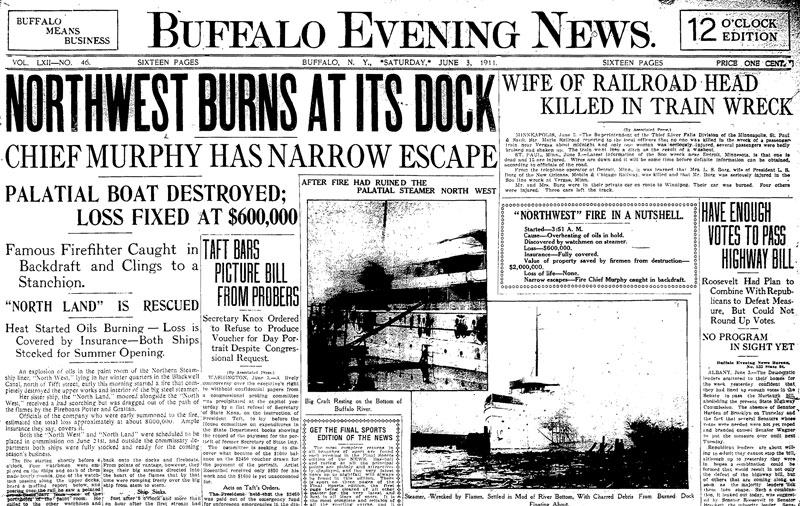
The beginning of the end of the careers of these liners began on June 3, 1911 in Buffalo. Read the entire news story transcribed here.
The "North West" was promptly raised but remained a burned out shell until 1917. The company decided not to invest the necessary $200,000 - $300,000 to restore it. The "North Land" was repaired for $2,000 and went into service as scheduled on June 21, 1911. Her last voyage was at the end of the 1916 season. Despite being filled to capacity every trip of their careers, the luxury liners made no profit during any year because of the 'high operating costs, short season, superb maintenance and elegant cuisine.' (Rapprich)
The remains of the "North West" were sold several times between 1917 and 1918 in expectation of being used for the war effort in World War I and were cut in half to permit passage through the narrow locks of the old Welland Canal and the St. Lawrence River. The bow sank in 175 feet of water off Olcott, NY November 28, 1918. The stern section was sold to a firm in Quebec. Eventually, the purchasing firm built a new bow and renamed the ship Maplecourt. After a career on the Great Lakes as a cargo ship, the Maplecourt was sent to Halifax in 1940 for convoy duty to England in World War II. She was lost in 1941, sunk off the Hebrides with her entire crew of 37 men.
The "North Land" suffered a less noble fate. It was sold to a Quebec firm in 1919, cut in half for the trip, and never rebuilt once it reached its destination. In 1921, both sections were scrapped.
An excellent source for this story was an article by Wlliam F. Rapprich, published in the Winter 1973 Inland Seas Quarterly.
